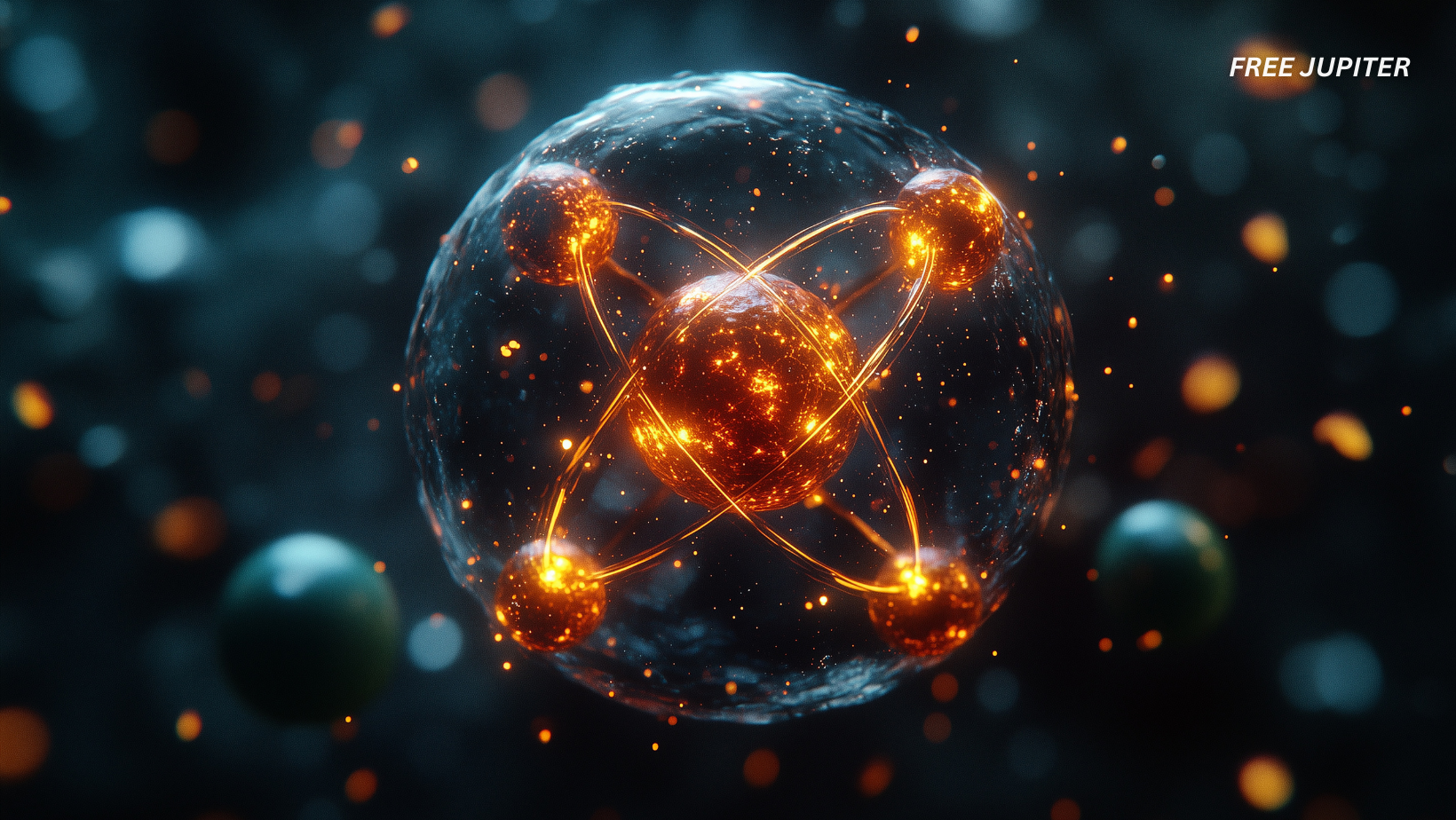Friendly Note: FreeJupiter.com shares general info for curious minds 🌟 Please fact-check all claims—and always check health matters with a professional 💙
Consciousness is often viewed as a uniquely human phenomenon, closely linked to our brains and behaviors. However, a compelling and unconventional idea has been quietly gaining traction for centuries – one that suggests experience might extend far beyond human minds, permeating the very fabric of the universe, including animals, plants, and even the tiniest particles.
This concept, known as panpsychism, proposes that every component of reality holds some form of experience, no matter how subtle. Recent scientific inquiry has rekindled interest in this theory as researchers grapple with the enduring enigma of consciousness: how does physical matter give rise to subjective experience?
If the workings of neurons alone cannot fully account for awareness, could it be that consciousness exists in a latent form everywhere, waiting to be organized into complex minds like ours?
The Historical Roots of Panpsychis
The question of whether consciousness is widespread is hardly new. Long before modern science, ancient thinkers pondered the nature of experience in the world around them.
- Thales of Miletus, in the 6th century BCE, was intrigued by magnets and suggested that their ability to move iron implied they possessed a soul.
- Shortly thereafter, Anaxagoras proposed that “everything contains a portion of mind,” anticipating the modern idea that tiny fragments of experience might combine to create richer awareness.
- The Greek Stoics envisioned the universe as a living entity animated by logos, a rational principle that connects all things and imbues matter with a unifying life force.
- In late antiquity, Plotinus maintained that the cosmos flows from a singular living source, a concept that resurfaced during the Renaissance with Giordano Bruno, who imagined an infinite universe filled with countless worlds, each possessing its own soul.
Though these views conflicted with the mechanistic worldview that eventually dominated science, they never fully vanished from philosophical discourse.
Enlightenment and Beyond: From Dualism to Monads
The Enlightenment era brought a decisive shift when René Descartes famously separated mind from matter, confining consciousness to an immaterial realm. Yet this did not end the debate.
- Gottfried Wilhelm Leibniz introduced the idea of “monads,” indivisible units that reflect the entire universe through their own tiny perceptions.
- By the late 19th century, thinkers like William James, Gustav Fechner, and Alfred North Whitehead revived the notion that feeling might be an intrinsic part of nature’s fabric rather than something added on top.
- The evolutionary insights of Charles Darwin further invigorated this perspective. If consciousness develops gradually through natural processes, perhaps it never truly begins at a single point but instead intensifies as matter becomes more organized.
Contemporary Science Engages the Mystery
Today, neuroscience confronts the puzzle of consciousness with fresh tools and theories. One influential approach is the Integrated Information Theory (IIT), proposed by Giulio Tononi in 2004.
- IIT suggests that consciousness corresponds to the amount of integrated information a system generates, represented by the symbol Φ (phi).
- A high Φ value indicates a richer, more unified experience, while a low Φ denotes a dimmer one.
- Importantly, IIT views consciousness as intrinsic and independent of outside observers, implying it could emerge in any sufficiently integrated system—whether an animal brain, an artificial network, or even a silicon chip.
Current research involves experiments stimulating the brain and creating computer models to test IIT’s predictions. Some findings hint that deep anesthesia, which suppresses consciousness, correlates with a sharp decline in integrated information. Though preliminary, these results lend empirical weight to the theory.
Mapping Experience Through Information Integration
IIT also aims to characterize the quality of subjective experience. Different configurations of integrated information might correspond to various qualia—the fundamental sensations like color, taste, or pain.
This bold goal has earned both admiration and skepticism. Critics question the practicality of calculating Φ in real-world systems and whether the mathematical framework truly captures the essence of subjective life.
Nevertheless, IIT has inspired innovative tests for machine consciousness, pushing the discussion beyond philosophy into tangible experimentation.
If IIT proves valid, it would provide a scientific foundation for panpsychism by showing that consciousness is not confined to biology but can arise wherever the right informational structure exists.
Read more: James Webb Confirms There’s Something Seriously Wrong With Our Understanding Of The Universe
The Quantum Connection: A Controversial Frontier
Another intriguing, though more contentious, hypothesis links consciousness to quantum mechanics.
- Physicist Roger Penrose and anesthesiologist Stuart Hameroff developed the Orchestrated Objective Reduction (Orch-OR) theory, which suggests that quantum computations occur within neuronal microtubules.
- According to their model, when enough microtubules become entangled, a quantum event called “objective reduction” happens, creating a moment of awareness influenced by quantum gravity.
- Many scientists remain skeptical, arguing that the brain’s warm, noisy environment is unsuitable for sustained quantum coherence and that microtubules are unlikely candidates for quantum bits.
- Supporters point to discoveries of quantum effects at room temperature in photosynthesis, proposing that nature might exploit similar mechanisms elsewhere.
While definitive proof for Orch-OR remains elusive, the theory keeps the dialogue between physics and consciousness vibrant.
Why This Matters: The Implications of Panpsychism
The idea that consciousness might be a universal feature of matter unsettles some thinkers, who worry it could dilute the significance of conscious experience.
One major challenge is the “combination problem”: even if elementary particles possess a faint awareness, how do these countless tiny experiences merge into the rich, unified consciousness humans enjoy? No widely accepted explanation exists.
Despite this, panpsychism persists because it offers a way to bridge the gap between mind and matter without resorting to dualism. If experience is inherent to matter itself rather than something added later, the divide between physical reality and subjective life becomes less stark.
Philosophers liken this shift to the realization that heat is not a separate substance but the motion of molecules—an insight that transformed our understanding of nature. Whether consciousness can be similarly redefined remains an open question, but the stakes are undeniably high.
Read more:Earth Has A ‘Heartbeat’ That Pulsates Every 26 Seconds
The Road Ahead: Exploring Consciousness in New Dimensions
Advancing our grasp of consciousness will require more precise experiments and refined theoretical tools.
- Neuroscientists continue to improve methods for measuring integrated information.
- Physicists search for quantum signatures within biological systems.
- Philosophers revisit ancient ideas with modern logic, debating whether panpsychism offers genuine explanatory power or merely clever rhetoric.
Wherever this journey leads, it challenges us to consider a profound possibility: consciousness might not be a rare phenomenon but a fundamental aspect of the cosmos.
If so, the real task is not to bestow minds upon inanimate objects but to understand how simple, elemental experiences combine to create the complex symphony of awareness that defines our waking lives.










